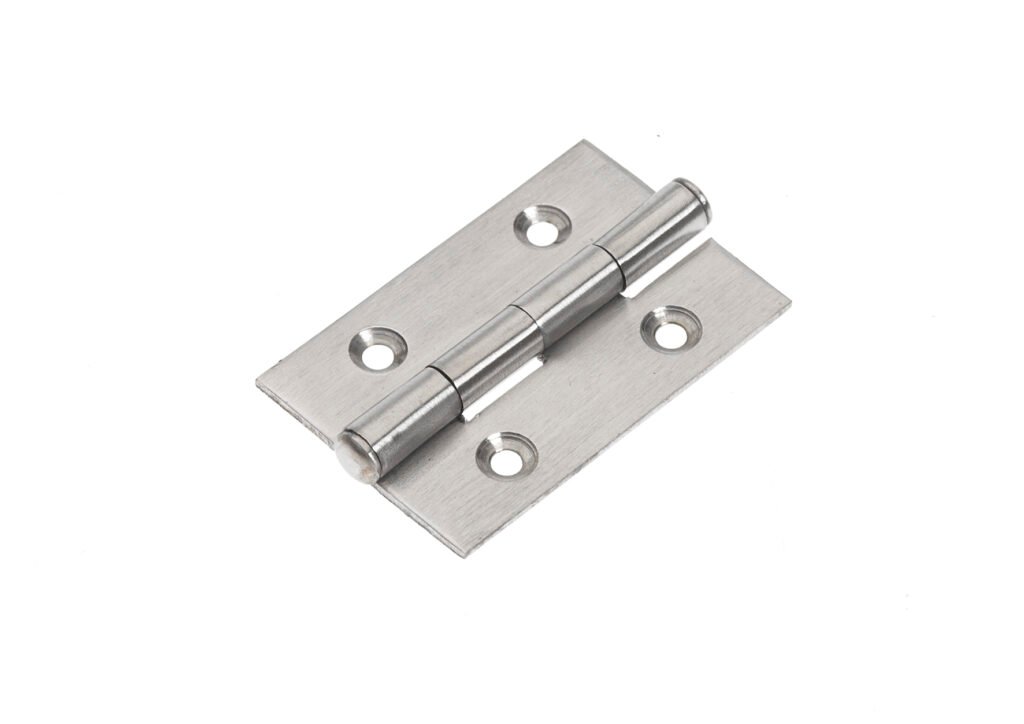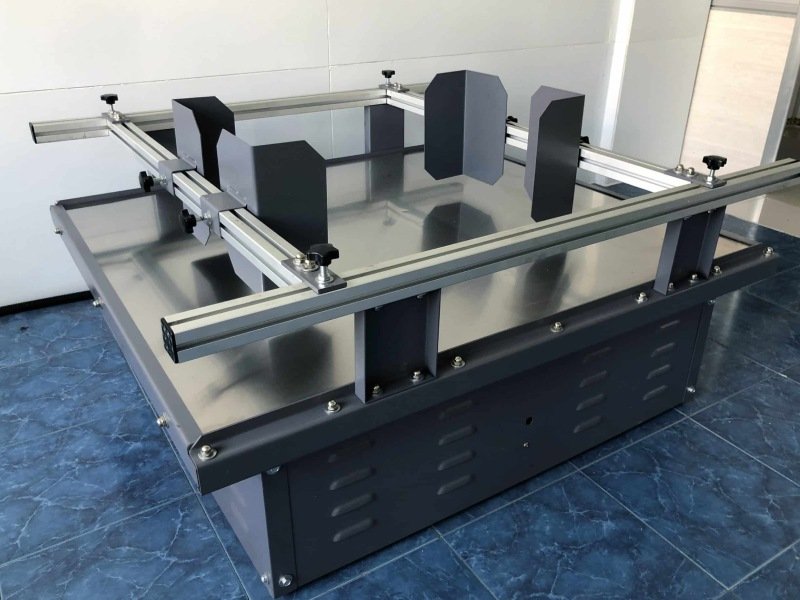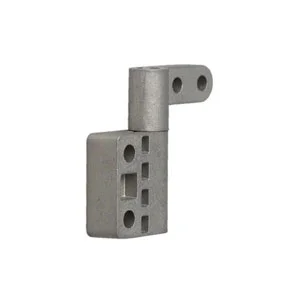Introduction: What are Butt Hinges?
Butt hinges are one of the most commonly used types of hinges for doors and cabinets. Comprising two metal plates (called leaves) joined by a central pin, they allow for smooth, swinging movement. Whether for lightweight interior doors or heavy exterior doors, butt hinges are a versatile and essential component in construction. These hinges are not only durable and long-lasting, but they also come in various types and sizes to suit different projects.
In this comprehensive guide, we'll explore the types of butt hinges, factors to consider when buying them, installation tips, common uses, and maintenance advice to ensure they remain in perfect working order.
What Are Butt Hinges and How Do They Work
Butt hinges are composed of two rectangular metal plates (or leaves) connected by a central pin that allows the door to swing open and closed. Each leaf is fastened to either the door or the door frame, and when the door is closed, the leaves meet flush. The knuckle, formed by the curled parts of each leaf, houses the pin, which holds the two leaves together. This design allows for smooth, pivoting movement, making butt hinges ideal for doors.

Butt hinges are used in both residential and commercial applications due to their durability and the ability to support both lightweight and heavy doors. The hinge's design allows for even distribution of weight, making it a perfect solution for doors that are frequently used, such as those in schools, offices, or homes.
How do Butt Hinges Work? The functionality of butt hinges relies on their simple but effective design. The two leaves are mortised into the edge of the door and the door frame. The door opens by rotating around the central pin, which acts as the pivot point. The key advantage of this mechanism is that it minimizes friction during movement, ensuring the door swings smoothly.
Butt hinges are typically made from materials like steel, brass, or stainless steel. Their durability depends heavily on the material and the finish, which can range from polished brass to matte black, depending on the design aesthetics.
Different Types of Butt Hinges
Butt hinges come in several types, each designed to cater to specific needs and applications. Selecting the right type of hinge for your project can significantly affect the ease of use and longevity of your door or gate.

Standard Butt Hinges
These are the most commonly used hinges for lightweight doors, such as those inside homes or offices. Standard butt hinges are simple, affordable, and easy to install. They come in various sizes to accommodate different door weights, but for most residential interior doors, a 3-inch or 3.5-inch hinge is sufficient.
- Pros: Easy to install, widely available, and affordable.
- Cons: Not suitable for heavy-duty applications or frequent use.
Ball-Bearing Butt Hinges
Ball-bearing butt hinges are designed for heavier doors, such as exterior doors or doors that experience frequent use. The ball bearings between the knuckles reduce friction, providing smoother operation and a longer lifespan. These hinges are ideal for main entry doors, commercial buildings, or heavy gates.
Rising Butt Hinges
Rising butt hinges are designed with a special knuckle mechanism that lifts the door as it opens. This hinge is ideal for rooms with thick carpets or uneven flooring, where a standard door might scrape the floor. When the door closes, it gently lowers back into place.
- Pros: Prevents scraping on thick carpets or uneven floors.
- Cons: Requires precise installation, may not be suitable for all door types.
Fire-Rated Butt Hinges
Designed to meet fire safety standards, these hinges are used in fire-rated doors to ensure the door remains functional even in high temperatures. Fire-rated butt hinges are typically made from steel or stainless steel and are tested to resist the spread of fire.
- Pros: Essential for fire safety, durable under extreme conditions.
- Cons: More expensive, only required for specific applications.
Security Butt Hinges
Security butt hinges have extra features like non-removable pins to prevent tampering. These are typically used for exterior doors to prevent burglars from removing the hinges to gain access to the building. They are an excellent choice for anyone prioritizing security, particularly in commercial or high-risk areas.
- Pros: Increased security, tamper-resistant.
- Cons: More costly than standard butt hinges.
Double-Action Butt Hinges
These specialized hinges allow the door to swing both ways, making them ideal for doors in restaurants or kitchens, where doors need to swing open in both directions. They’re less common in residential applications but can be useful in specific situations.
- Pros: Allows door movement in both directions.
- Cons: Requires more space and precise installation.
- Pros: Long-lasting, smoother operation, ideal for heavy-duty applications.
- Cons: Slightly more expensive than standard butt hinges.
Each of these types of hinges serves a unique purpose, and choosing the right type for your door is essential to ensure functionality, safety, and ease of use.
How to Choose the Right Butt Hinge for Your Project
Choosing the right butt hinge is crucial to the success of your project. Here are several factors to consider when buying butt hinges for your door, gate, or cabinet:
- Door Weight and Size
The weight and size of your door will determine the strength and size of the hinge you need. Heavier doors will require ball-bearing or heavy-duty butt hinges, while lighter interior doors can use standard butt hinges. For doors that are over 60 inches tall, it’s often recommended to use three hinges for additional support. - Hinge Size
Butt hinges come in various sizes, typically ranging from 2 inches to 6 inches. The size you need depends on the weight and thickness of your door. Most interior doors use 3-inch to 3.5-inch hinges, while exterior doors may require 4-inch to 5-inch hinges to provide sufficient support. - Hinge Material
The material of the hinge should be chosen based on the environment. Stainless steel or brass hinges are best for outdoor applications due to their resistance to corrosion. For indoor use, steel hinges are typically sufficient. Brass hinges are popular for their aesthetic appeal and durability, while zinc-plated hinges are a more budget-friendly option for indoor use. - Hinge Finish
The finish of the hinge plays both a functional and aesthetic role. Common finishes include polished brass, chrome, antique brass, and matte black. When choosing a finish, it’s essential to consider the overall look of the door and the surrounding decor. For example, a modern home might benefit from sleek stainless steel or matte black hinges, while a more traditional design might suit polished brass. - Hinge Type
As discussed earlier, the type of butt hinge you choose will depend on the door’s purpose and weight. For heavier doors, opt for ball-bearing butt hinges, while rising butt hinges are ideal for rooms with thick carpets. - Number of Hinges
For most standard doors, two hinges are enough. However, heavier or taller doors may require a third hinge in the middle to provide additional support and prevent sagging over time. For exterior doors or high-traffic areas, it’s essential to choose a stronger hinge type and ensure proper installation.
Tips for Installing Butt Hinges
Installing butt hinges can be an easy task if done correctly. Here’s a step-by-step guide to ensure proper installation:
- Gather the Right Tools
Before starting, gather the necessary tools, including a chisel, drill, screwdriver, measuring tape, and level. You’ll also need the screws that come with the hinges. - Mark the Hinge Position
Using a measuring tape, mark the position of the top and bottom hinges on both the door and the frame. A standard door typically requires the top hinge to be placed about 5 inches from the top, and the bottom hinge around 10 inches from the bottom. If you are using three hinges, the third one should be placed equidistant between the top and bottom hinges. - Create the Hinge Mortise
Using a sharp chisel, carefully carve out the mortise (recess) in both the door and the door frame where the hinges will sit. The mortise should be the same depth as the hinge leaf to ensure that the hinge sits flush when installed. Take your time to ensure precision. - Attach the Hinges to the Door
Once the mortises are created, position the hinge in the recess on the door. Use a drill to create pilot holes for the screws. Secure the hinge to the door using the screws provided. Ensure that the hinge sits flush with the surface of the door. - Align the Door with the Frame
Hold the door in place and mark where the hinge will sit on the door frame. Once marked, repeat the process of creating the mortise on the frame. - Attach Hinges to the Door Frame
After mortising the door frame, attach the other side of the hinge to the frame using the same method: drill pilot holes and secure with screws. - Test the Door Movement
Once the hinges are attached, test the door to ensure it swings smoothly. If the door scrapes the floor or doesn’t close properly, check the alignment of the hinges and adjust as necessary.
Common Uses for Butt Hinges
Butt hinges are used in a wide variety of applications, making them a versatile choice for construction and home improvement projects:
- Interior and Exterior Doors
Butt hinges are most commonly used for doors, both inside and outside the home. Standard butt hinges are ideal for lightweight interior doors, while ball-bearing butt hinges are perfect for heavy exterior doors or doors that see frequent use. - Cabinets and Furniture
Smaller butt hinges are often used for kitchen cabinets, armoires, and other types of furniture. These hinges are strong enough to support the weight of the doors, while still allowing smooth and silent operation. - Windows
Butt hinges are sometimes used in larger, swinging windows to allow the window to open and close smoothly. In these cases, weather-resistant materials like stainless steel are recommended to prevent corrosion. - Gates and Fences
For exterior gates, ball-bearing or heavy-duty butt hinges are commonly used to ensure the gate can swing open easily without sagging over time. These hinges are also strong enough to handle the extra weight that outdoor gates often bear. - Fire Doors
In commercial buildings, fire-rated butt hinges are required for fire doors to ensure they remain functional during a fire. These hinges are designed to withstand extremely high temperatures and prevent the spread of fire.
How to Maintain Butt Hinges
Proper maintenance will ensure that your butt hinges last for many years, providing smooth, silent operation. Here are some key maintenance tips:
- Lubrication
Over time, hinges can start to squeak due to the friction between the knuckles. To prevent this, apply a small amount of lubricant (such as oil or silicone spray) to the hinge pin. This will reduce friction and ensure smooth operation. Be sure to wipe away any excess lubricant to prevent dirt from building up. - Check for Loose Screws
Hinges can loosen over time, especially in high-traffic areas. Periodically check the screws to ensure they are tight. Loose screws can cause the door to sag or become misaligned, which can eventually damage the door or frame. - Inspect for Wear and Tear
If you notice any signs of rust, corrosion, or damage, it’s essential to replace the hinge as soon as possible. Rust can weaken the metal and affect the door’s functionality. For exterior doors, consider upgrading to stainless steel or brass hinges to prevent rusting. - Clean the Hinges
Dust and dirt can build up around the hinges, especially on exterior doors. Clean the hinges regularly with a damp cloth to prevent debris from affecting the movement. For tougher grime, a mild detergent or soap can be used.
Summary
Butt hinges are an essential component in many construction and home improvement projects. From interior doors to heavy exterior gates, they offer a smooth, durable solution for swinging doors. By understanding the different types of butt hinges—whether standard, ball-bearing, or rising—you can choose the right hinge for your project. Proper installation and regular maintenance will ensure that your butt hinges provide long-lasting, trouble-free operation. Whether you're a beginner buyer or an experienced DIYer, this guide will help you make informed decisions when selecting and installing butt hinges.







